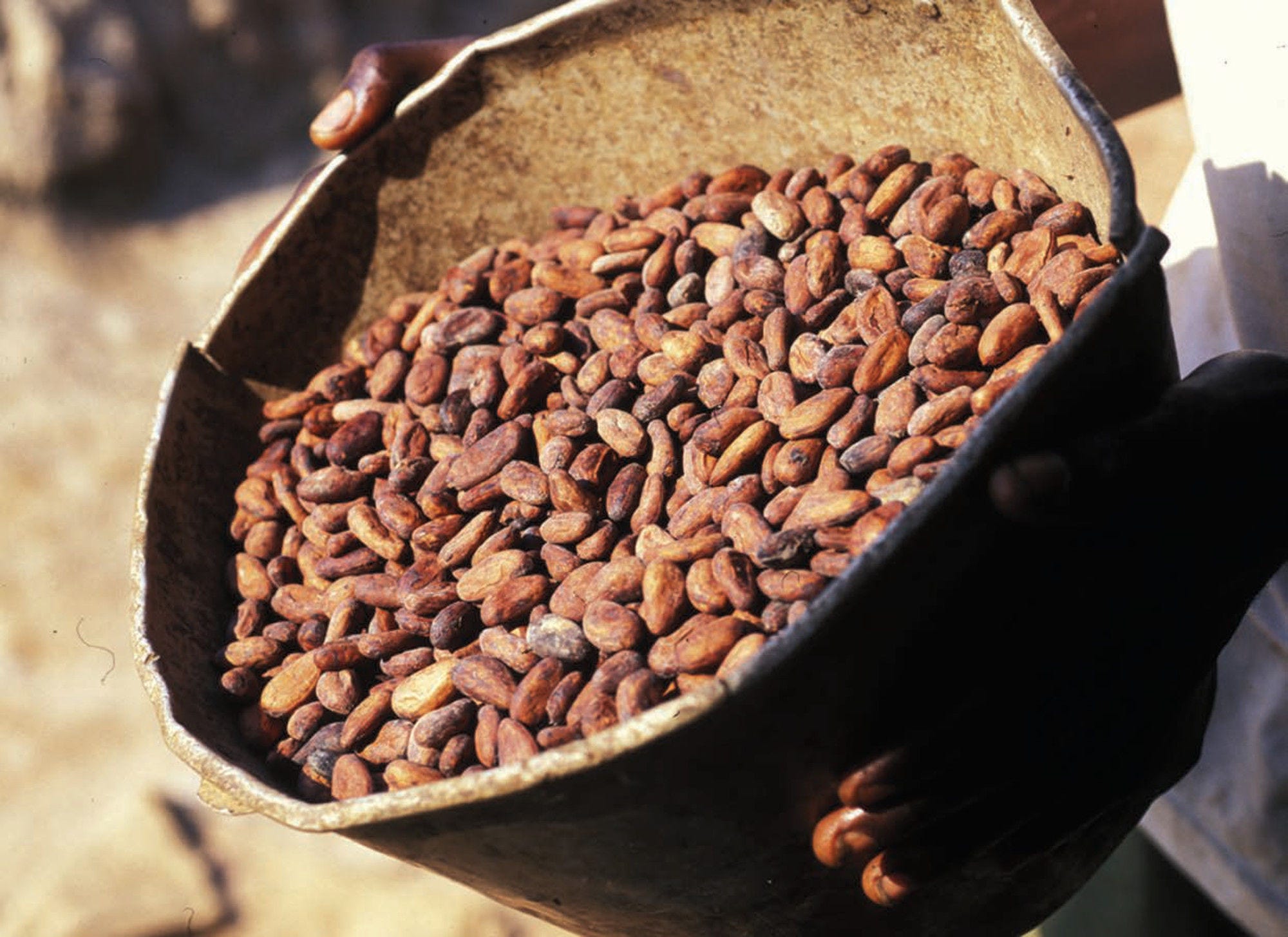Step 5 provides recommendations on how to externally communicate relevant information on due diligence polices, processes and activities conducted to identify and address actual and potential impacts, including the findings of these actions.
Business Handbook on Due Diligence in the Cocoa Sector

Step 5: Communicate and report on due diligence
Abstract
Strategic questions for enterprises to ask
To what extent are you reporting on policies on child labour and forced labour in your operations and supply chain? Are these reports publicly available?
What significant adverse impacts or risks have been identified, prioritised and assessed and what are the criteria for prioritisation? Has this been communicated publicly?
What activities is your company implementing to identify, prevent or mitigate adverse risks and impacts, including timelines and benchmarks for improvement and outcomes? For child labour and forced labour, has an effective system been implemented? Have details of these been shared?
How is your company measuring and tracking implementation of activities to identify, prevent, cease or mitigate child labour and forced labour? Have the results been shared publicly?
In instances when you have caused or contributed to an impact, to what extent have you communicated to stakeholders your follow-up actions and results?
If your company has provided for, or co‑operated in, any remediation, what were the results? Has this information been shared publicly?
Communicate and report on due diligence
Companies should communicate externally on their due diligence activities, the risks found – including child labour and forced labour – and the actions that have been taken to address these risks. Such public reporting is increasingly being called for as part of non-financial reporting and in due diligence legislation, as well as voluntary disclosure frameworks by investors. Some jurisdictions may have specific reporting requirements with respect to due diligence.
Publicly report relevant information on due diligence processes
What are you communicating externally?
Clear, accurate and timely information should be provided to affected stakeholders and business partners on actual and potential child labour and forced labour impacts identified, and on the steps and measures you have taken to mitigate or prevent them. Naturally, public company reports should have due regard for commercial confidentiality and other competitive or security concerns.
Due diligence policies and management systems: Relevant information including management structures, staff training and due diligence processes in place, as well as the system of controls and transparency your company has applied or is in the process of applying, throughout the cocoa supply chain (i.e. a chain of custody or traceability system either on its own or in collaboration with other stakeholders).
Due diligence process and the supply chain risks: Reporting should cover the process your company uses to identify, prioritise and assess risks in the cocoa supply chain, and the results of this assessment. In terms of child labour and forced labour this should include measures taken to mitigate and prevent child labour and forced labour in your supply chain. Such external communication may provide the information on measures that will be taken if your company becomes aware of child labour and forced labour in your supply chain, with time bound limits for remedial action and involvement of relevant stakeholders. Public reporting could also include 3rd party assessments on your company’s due diligence efforts, any shareable assessments of control point enterprises in your supply chain, as well as other assessments conducted on segments of your supply chain that are considered at risk for child labour and forced labour.
Progress and outcomes: Reporting could communicate the findings and outcomes of due diligence efforts on what has worked as well as what should be improved.
Box 8. Examples of what to communicate when reporting on progress and outcomes of due diligence efforts
The coverage of a company’s due diligence with regards to child labour and forced labour and how this compares to overall sourcing. For example, “our due diligence efforts in 2022 covered 200 households which represents 80% of the direct supply chain and approximately 50% of our total cocoa supply chain (including that from the indirect supply chain).”
The number or percentage of children identified in or at risk of child labour and forced labour through a company’s due diligence. For example: In 2022, approximately 27% of children interviewed as part of our due diligence systems were found to be in child labour.”
The types of support provided, including information on prevention and remediation support such as awareness raising activities, support to improve access to quality education, income generating activities, etc. For example: “As part of efforts to tackle child labour and forced labour in the cocoa supply chain, 200 households were involved in awareness raising activities, 150 school kits were distributed and 100 households received support for alternative income generating activities.”
The outcome of those actions, for example the number of children that are now out of child labour and other changes recorded through follow-up on risks and impacts identified. For example: “A third of children found in child labour are no longer in child labour after two follow-up visits.” Or “Child labour has decreased by 30% in the communities we source from.”
The efficacy and efficiency of due diligence efforts such as improvements in case identification rates, the speed of support provided, outcomes such as reductions in child labour.
Publish the above information in a way that is easily accessible and appropriate
Reports on a company’s due diligence should be easily accessible, for example published on its website, or published through sustainability or integrated reports, available at the enterprise’s premises and in local languages. Be aware that communicating with impacted, or potentially impacted, rightsholders may require a different approach than other stakeholders. It is important that communities understand company commitments in terms of actions to address adverse impacts such as child labour and forced labour, what activities will be put in place and why, their outcomes over time, and what recourse an individual may have should those commitments not be met.